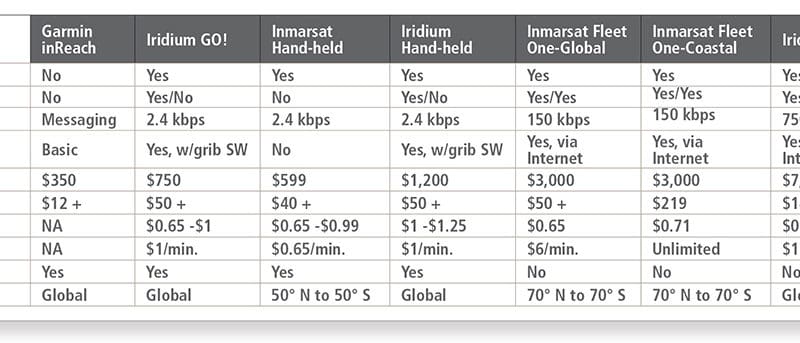
In the past 20 years satellite communications has grown from a novelty item for voyagers to something more like standard equipment for the voyaging boat. Between fixed terminal satcom options and handheld satphones, there are a variety of choices and combination products. And now companies like SpaceX and OneWeb are launching fleets of thousands of low earth orbit (LEO) spacecraft that will provide Internet connectivity to every point on the globe. While these LEO-based systems are primarily intended for land-based users, there will likely be options for mobile and marine users as well.
We asked Dave Brengelmann, an avid sailor and outdoorsman who lives in Seattle and works for Fort Lauderdale-based Network Innovations, some questions about where the satellite market is now and what might happen with the new LEO networks.
Ocean Navigator: The first companies to offer a satphone were Inmarsat, Iridium, and Globalstar. How are these companies doing in serving their customers and keeping their systems updated?
Dave Brengelmann: You have mentioned the three common L band providers. All three offer handheld satellite phones in addition to larger satcoms designed for maritime installations. Inmarsat and Iridium have done a great job keeping their systems updated; both companies have made significant improvements to their satellite networks and have developed new equipment to take advantage of new higher data throughput available through their new satellites.
ON: The firms offering fixed terminals, like KVH, for example — how do those products make sense for voyaging sailors in terms of weight and size of the antenna units?
DB: KVH is a good option for users that require unlimited data packages or broadband data services. Unlike L band networks, KVH offers Ku band services (commonly known as VSAT) that are sold with unlimited monthly plans. You won’t get billed by the megabyte and the minute like is common with Inmarsat and Iridium.
ON: What about the more expensive hardware like Iridium CERTUS that uses a fixed antenna unit? Do those only make sense for commercial users? Should voyagers stick to using the Iridium GO?
DB: Iridium GO! uses a 2,400-baud legacy Iridium service, so only stick to the GO! if you require voice, SMS, and simple email with no attachments. Products like Iridium’s CERTUS or Inmarsat’s FleetOne offer higher speed data, so it is much easier to conduct business at sea. With CERTUS you can even make a video call, but since these services are billed by data volume you need to be very careful about usage. If you want to run a business from your boat, you may end up spending $2,500 per month just for airtime service, but that’s the price of luxury.
ON: SpaceX is launching thousands of satellites for its Starlink system that will offer Internet access to rural users. And OneWeb has a similar system in the works. Will these voyagers on boats be able to use these systems for Internet access and even VOIP?
DB: SpaceX is currently offering beta service for land mobile fixed sites, but there is no maritime antenna available yet. You can see beta users unbox and deploy their Starlink antennas on YouTube to get an idea of what the current technology is like. I think that maritime service for the SpaceX Starlink service still may be a few years away. You can’t put the current antenna on top of a wheelhouse and expect it to work. n

